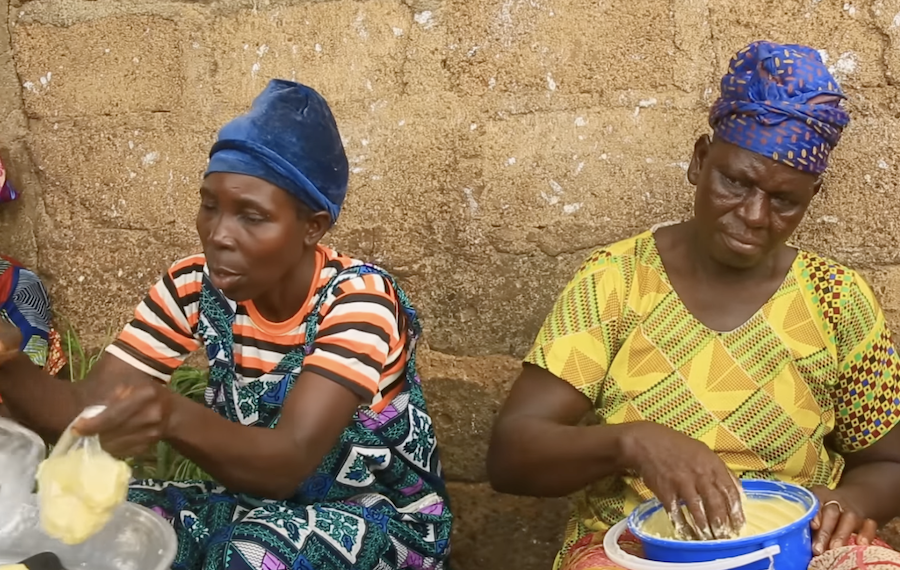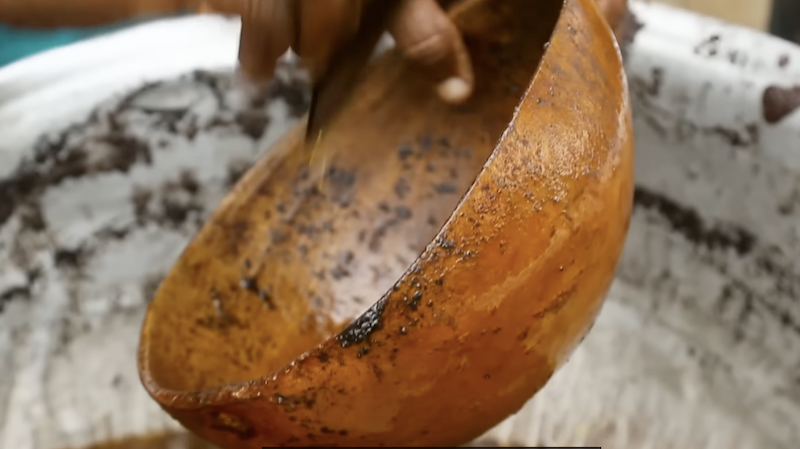




Women in West Africa and the Shea Butter Tradition
Beauty Stories@beautystories
1 year ago
Women in West Africa have been turning shea nuts into butter for centuries. The process is hard, requiring at least three women to mix one pot. The yellow paste is often called "women's gold," and for many in northern Ghana, it's the only source of income.
People across Africa have used shea butter for skin and hair care, food, and medicine for at least 700 years. In recent decades, it has become a global sensation. International customers often buy larger quantities from companies that can produce it faster, making it harder for traditional farmers. But the biggest threat is right in their backyard. For the past four decades, men have been cutting down the very tree that provides livelihood to many families.
We traveled to Ghana to find out how, despite the challenges, this group of women artisans is still standing.
The day starts with a two-hour trek to the forest for many women in the town of Yinduri. The journey can be dangerous. They have to travel in groups to avoid armed robbers lurking in the forest, and they risk getting bitten by snakes when walking through the grass.
The shea tree grows along a dry savanna belt that stretches from East to West Africa. Only the ripe shea nuts that have fallen from the tree are ready. The return home can also be physically taxing. The women carry more than 25 kilograms of seeds on their heads.
They first wash the seeds and let them dry for a week. Then it's time for cracking. The nuts are ready when the kernel starts to rattle against the shell. Only the good ones are made into butter. The bad nuts are used to make a special food called kanwu and as fertilizer on their farms. This attention to detail sets traditional shea butter apart from commercially made ones.
Portia Asumda has led an organization called Titiaka Boressa for the last three years. The group provides cooking pots and training for shea farmers in the Talensi district. It also teaches them how to pick the best-quality nuts for their product.
They crack the nuts into smaller pieces with a brick, then roast them over an open fire until they become fragrant. This helps release the oils that give shea butter its nutty taste and smell.
It's one of the skills Akunia Alahire is teaching her daughter. She has been making shea butter for more than half her life. She grinds the shea nut pieces by hand. Some shea farmers have invested in grinding mills to make this step easier. But Akunia takes pride in sticking to techniques that date back to the 14th century.
The divots in these rocks provide the perfect working space. The women only produce small batches at a time to ensure the quality will be consistent. It's all hands on deck when it comes to mixing the shea paste. The work can be grueling and takes a lot of strength.
They do this for one hour to get the right consistency. The water activates the butter. Slowly, it separates and floats to the top. Akunia melts the butter in another fire using wood that was harvested in the forest. She waits until it turns a deep chocolate color.
The shea oil will cool and be sold as unrefined butter. The first accounts of shea butter use date back to 14th-century Burkina Faso. It's been used in West African households as a cooking fat and a moisturizing salve for skin. Legend has it that even the Egyptian queen Cleopatra appreciated the butter for its hydrating power.
In recent decades, global demand for shea butter has increased dramatically. Its healing properties and high levels of vitamins have made it the ultimate ingredient for skin-care products across the world. In the last 20 years alone, annual exports have increased 600%. But with new demand have come new challenges. Deforestation, competition from bigger companies, and a global pandemic have threatened the livelihoods of small-scale shea farmers.
Faster, machine-run shea processing plants in Ghana have also begun taking over the market, making it difficult for this group of women to keep up. It takes them an entire month to produce what a big factory can do in three days.
Deforestation is also an ongoing battle. Since the 1990s, men have been cutting down shea nut trees to make charcoal for commercial use. Around 8 million trees are cut each year.
Shea butter-making has sustained generations of women in Ghana. Today, many depend on it as their only source of income.
Organizations like Portia's teach traditional shea farmers how to produce better-quality butter and understand its value in the local market. With this knowledge, they can take home a higher profit from their sales.
The organization is also working to combat deforestation. Over the last two years, it's planted 7,000 shea trees in hopes of repopulating the parklands. Although there are many challenges, Portia sees a bright future ahead.
Young women are still interested in learning the craft. She hopes that expanding her business will give more opportunities to people looking to learn the skill in its traditional form. For women here, shea butter is a symbol of prosperity and independence. They are determined to pass it on to the younger generation.
